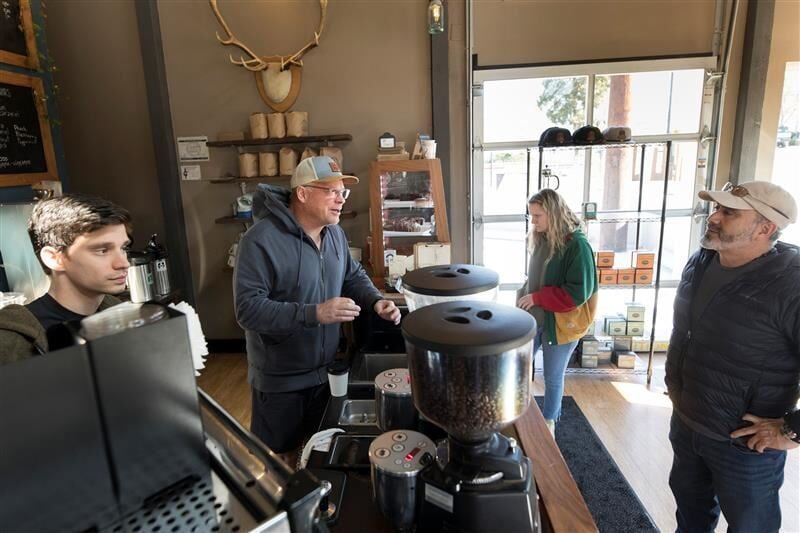Survey: Close to half of Oregon businesses have cut hours
Published 12:00 am Thursday, May 7, 2020

- Owner Kevin Bates fills a customer's order at the Tigard Symposium Coffee shop earlier this year, before the quarantine.
More than 70% of Oregon business owners report a decrease in sales since the start of the lockdown caused by the COVID-19 pandemic, according to a new survey of 5,000 businesses around the state.
Trending
The survey — conducted by Business Oregon, Travel Oregon and the Oregon Small Business Development Center Network — also revealed that 44% of businesses have cut hours for workers and 27% have laid-off employees.
While relatively high compared to the pre-COVID-19 era, the numbers weren’t surprising given that the state has been on lockdown orders for six weeks.
The statistics mirror what has been reported by the Oregon Unemployment Department, which said last month that 12% of the total workforce had filed for unemployment within the first five weeks of the stay-at-home order, according to the Bend Bulletin.
Trending
The survey was conducted for two weeks in April. Around 69% of responses were completed by businesses with fewer than 10 employees.
The report comes as Gov. Kate Brown released a of the state economy in three phases. The restrictions shuttered many businesses statewide as a way to slow the spread of the novel coronavirus, which, as of Friday, May 7, had resulted in the deaths of 121 Oregonians.
While 40% of businesses have made temporary closures, around 2% said they are permanently shutting down their operations, according to the report. In rural areas, 45% have made temporary closures and 3% closed permanently.
Among the businesses surveyed, 28% said they saw their revenue plummet 90% year-on-year in the month of April.
The ability to work remotely has helped some companies carry on their business as usual — 33% of respondents said their workforces could work remotely.
The survey broke this down by sector. The leading categories of work that could be done remotely include information (85%), professional and business services (66%), and financial activities (61%).
At the other end of the spectrum, just 6% of restaurant/bar and food service jobs could be done remotely and just 7% of jobs in accommodation could be done remotely.
Michael Kohn is a reporter with the Bend Bulletin, a media partner of the Oregon Capital Bureau.







